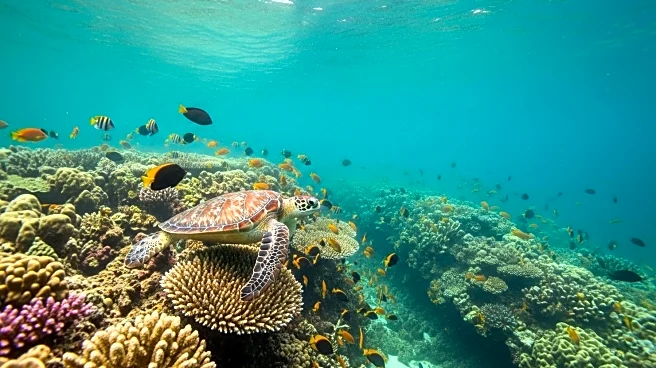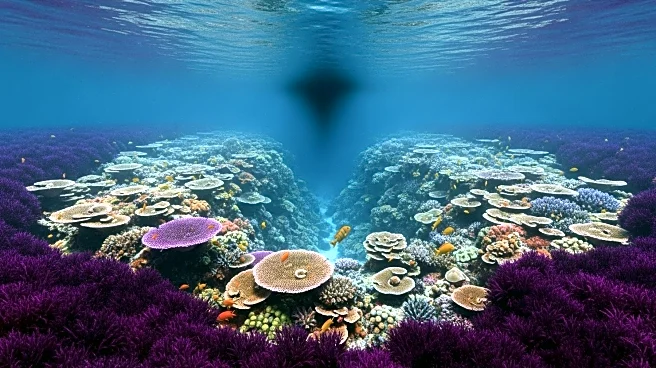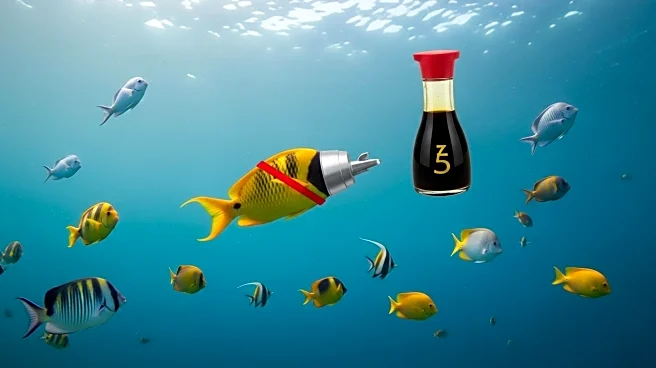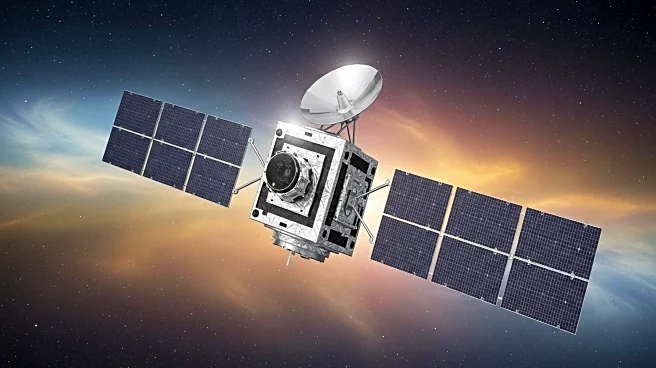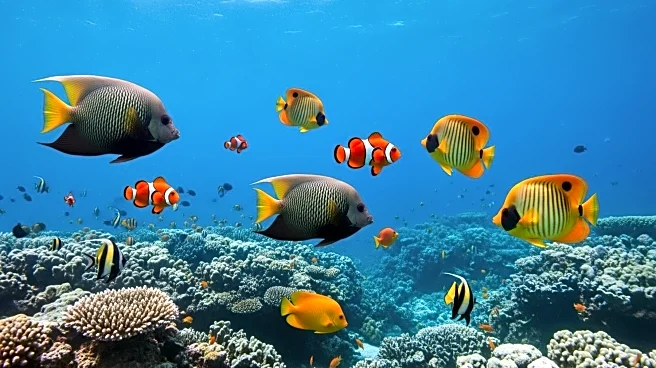What's Happening?
In South Australia, a significant environmental crisis has unfolded due to an algal bloom, resulting in the deaths of thousands of marine animals. The bloom, which began in March, has led to the death of over 34,000 marine creatures, including 61 leafy seadragons and 604 Port Jackson sharks. The situation was initially brought to light by a surfer's report of health issues after exposure to the water. This prompted a community-driven effort to document the impact, with over 900 observers logging data on the iNaturalist app. The bloom has been identified as Karenia mikimotoi, a species known for its harmful effects on marine ecosystems. The community's response has been crucial in gathering data, as official responses were slow, leading to a reliance on citizen science to track the disaster.
Why It's Important?
The algal bloom in South Australia highlights the vulnerability of marine ecosystems to environmental changes, such as marine heatwaves, which are believed to trigger such blooms. The event underscores the need for proactive environmental monitoring and response strategies to mitigate the impact of similar occurrences in the future. The deaths of marine life not only disrupt the ecological balance but also affect local communities and industries reliant on marine resources. The situation has prompted calls for increased government investment in monitoring programs to prevent future disasters. The community's involvement in data collection demonstrates the potential of citizen science in environmental conservation efforts.
What's Next?
In response to the crisis, state and federal governments have allocated a $28 million joint fund for science and research to support local communities and industries. This funding aims to enhance monitoring and response capabilities to prevent future algal blooms. Additionally, organizations like OzFish are working on restoration projects, such as seagrass meadow restoration and shellfish reef construction, to increase ecosystem resilience. These efforts are crucial in mitigating the impact of algal blooms and restoring affected marine habitats. The ongoing research and community involvement are expected to provide valuable insights into managing and preventing similar environmental challenges.
Beyond the Headlines
The algal bloom crisis in South Australia also raises questions about the effectiveness of current environmental policies and the need for comprehensive strategies to address climate-related challenges. The event has fostered a sense of community collaboration, with individuals and organizations working together to address the crisis. This collective effort highlights the importance of public engagement in environmental conservation and the potential for grassroots initiatives to drive meaningful change. The situation also serves as a reminder of the interconnectedness of human activities and natural ecosystems, emphasizing the need for sustainable practices to protect the environment.
